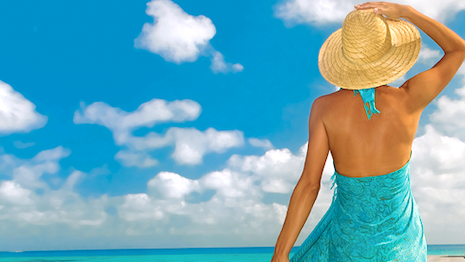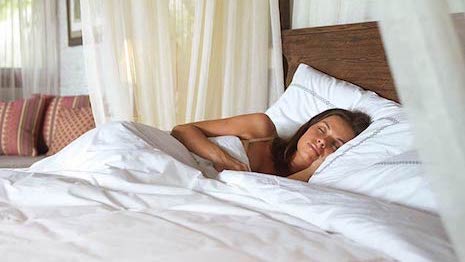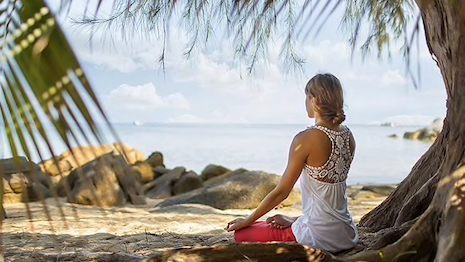 Wellness travel remains popular among affluents. Image credit: Oceania
Wellness travel remains popular among affluents. Image credit: Oceania
NEW YORK – Interest in wellness travel is not losing momentum, according to industry experts speaking on a panel at Condé Nast Traveler’s Points of View Summit.
From cruises and spas to family resorts, the hospitality industry continues to add wellness offerings such as fitness, healthy meals, spa treatments and digital detoxes. While interest in wellness travel is present across generations, different demographics have different interpretations of wellness.
“Travel enriches people’s lives,” said James Rodriguez, executive vice president of sales and marketing at Oceania Cruises. “Health, wellness and sustainability leave a real impact on the world.”
Wellness opportunities
Wellness in travel is expected to become an $800 billion industry by 2020, according to the Global Wellness Institute. The organization found that the wellness industry grew 10.6 percent from 2013 to 2015, while the rest of the world’s economy struggled with a decline of 3 percent (see story).
During the Oct. 7 panel, Condé Nast Traveler’s deputy editor Issy von Simson noted that a difference is emerging between destination spas and hotels that offer spas. Some wellness-centric spas offer follow-up programs and will continue to engage with guests weeks or even months after their visit.
Per a report from Altiant, nearly three-quarters of wellness travelers are open to receiving follow-up correspondence, such as coaching or advice, from trip organizers. This is another opportunity for hospitality groups to build consumer relationships and possibly create another revenue stream (see story).
Four Seasons has created customizable beds to help guests get a good night’s sleep. Image credit: Four Seasons
Sleep has also become a big part of the wellness industry, according to Jesse Ashlock, U.S. editor at Condé Nast Traveler.
In 2017, Four Seasons Hotel London at Park Lane partnered with luxury skincare brand Omorovicza on a package meant to ensure a night of restful sleep.
During the weeklong pop-up, Four Seasons’ guests were able to experience spa treatments featured on the Omorovicza Midnight Menu. Omorovicza designed the treatments to prepare the skin and body for restorative sleep (see story).
Although cruises once had a reputation for overindulgence, that is no longer case, argued Mr. Rodriguez. He believes that luxury cruise lines are at an advantage in wellness travel because they can better bring together new cultures and destinations while maintaining a focus on mental and physical fitness.
Oceania offers more than 50 tours that blend onshore excursions with wellness experiences, such as Kandyan dance therapy in Sri Lanka or a dip in thermal baths outside of Rome. Its cruises also offer vegan cuisine and extensive spa treatments.
Oceania offers more than 50 wellness tours. Image credit: Oceania Cruises
Oceania is not the only cruise line investing in wellness.
Regent Seven Seas Cruises is expanding its wellness offerings with a new spa brand that spans onboard and on-shore experiences.
Serene Spa & Wellness will debut on the cruise line’s Seven Seas Explorer in December, and will progressively roll out to the full fleet. Featuring a menu of services inspired by global destinations that Regent’s vessels travel to, the brand aims to meet consumers’ growing appetite for health and wellness travel (see story).
Multigenerational wellness
As multigenerational travel grows in popularity, hospitality leaders are also expanding wellness offerings to better resonate with varying age groups.
This past Global Wellness Day, hospitality group Rosewood Hotels offered family-friendly options allowing parents and children to learn about health together.
Rosewood Abu Dhabi hosted a mother-daughter spa retreat, while Rosewood Beijing held a children’s yoga session and an arts and crafts class. Many properties, including Rosewood Sand Hill and Miramar, also offered cooking lessons so guests could build their healthy eating habits (see story).
Digital detoxes also remain popular, from Generation X to Generation Z.
Mandarin Oriental is one of many hospitality brands that offer interactive methods of detaching oneself from digital devices, including coaches and hands-on activities. During spa services, cell phones are locked up in safe keeping so that guests are free from any distractions (see story).
“If you’re doing something drastically different than your everyday experiences [during a wellness trip], what are you getting out of it?” said Carolyn Kylstra, editor in chief at Self. “Digital detoxes help you disconnect and learn new habits.”


